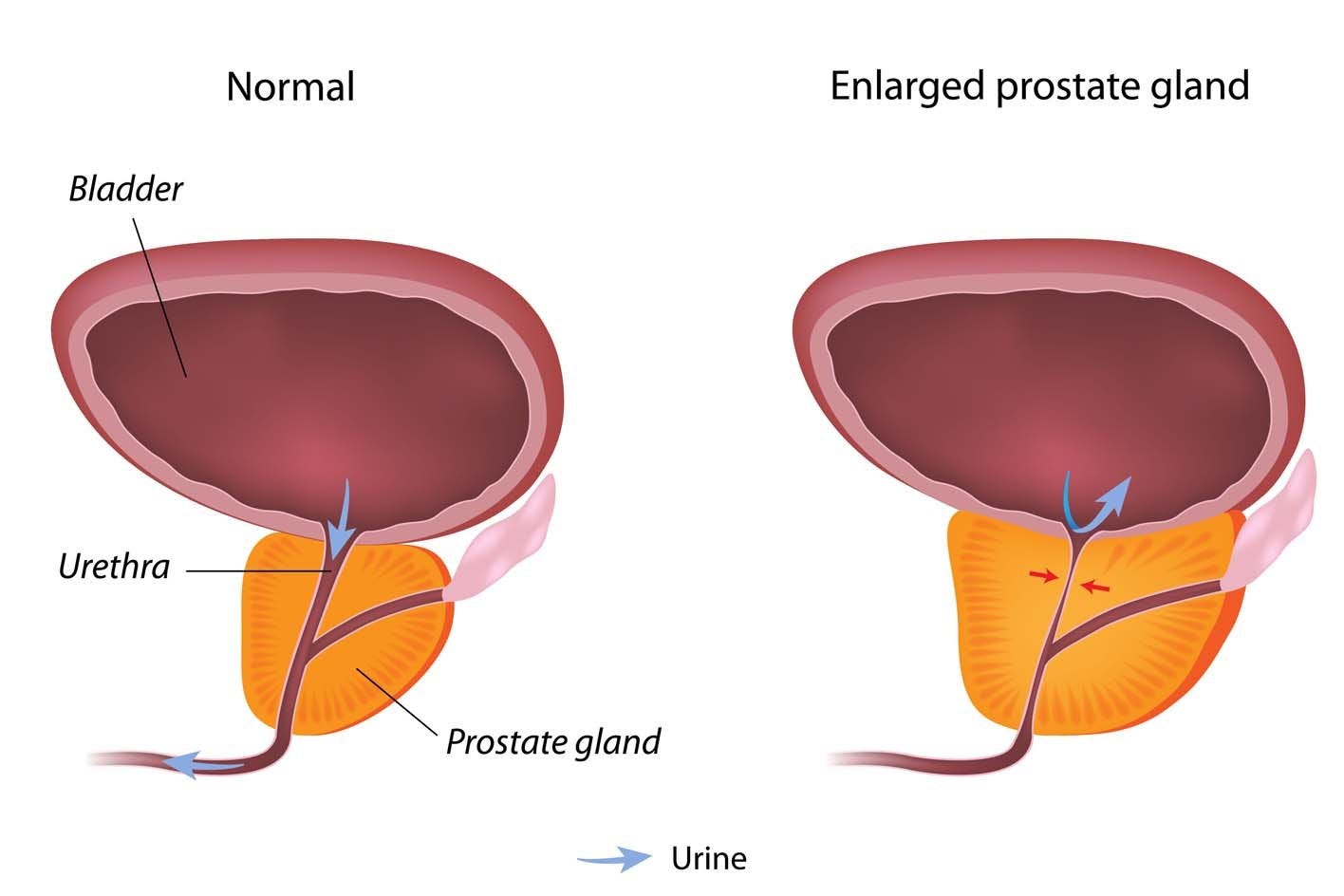Signs of an Enlarged Prostate and How Doctors Diagnose It
An enlarged prostate (BPH) can cause a variety of urinary symptoms.
Recognizing these signs is important because they can affect daily life and may prompt you to seek medical help. Below are the common symptoms of BPH and how doctors diagnose an enlarged prostate.
Common Symptoms of BPH
Men with an enlarged prostate often experience:
Changes in urine flow: The urine stream is weaker than normal (it may stop and start), and there can be dribbling at the end of urination.
Difficulty starting urination: It may take you a moment of pushing or waiting for the urine flow to begin, even when you have a strong urge.
Frequent or urgent need to urinate: You need to urinate more often than before, and it can be hard to hold it. This often includes waking up multiple times at night to go (nocturia).
Feeling of incomplete emptying: After you finish, it feels as though your bladder isn’t completely empty.
These symptoms can range from mild to quite frustrating. Symptom severity varies and doesn’t always reflect prostate size – sometimes a relatively small enlargement can cause big problems, and a large one might cause few issues. In very severe cases, BPH can lead to an inability to urinate (urinary retention) or frequent urinary tract infections from retained urine, but those are less common.
How Doctors Diagnose an Enlarged Prostate
When you visit a healthcare provider for possible BPH, they will typically:
Ask about your symptoms and history: The doctor will ask detailed questions about your urinary symptoms (what they are and how long you’ve had them). They’ll also review your health history and any medications, since some drugs or conditions can cause similar issues.
Do a physical exam (DRE): A digital rectal exam allows the doctor to feel your prostate through the rectum. With a gloved finger, they can estimate if the prostate is enlarged and check its texture. In BPH, the prostate may feel enlarged but smooth. The doctor will also check for any hard bumps or irregularities that could suggest a different issue. The exam is quick and might be slightly uncomfortable, but it provides valuable information.
Check your PSA level: A blood test for prostate-specific antigen (PSA) is often done. BPH can raise PSA levels because an enlarged prostate produces more PSA. The doctor will interpret your PSA result in context. If the level is higher than expected, they might suggest further tests to rule out prostate cancer, but a mild PSA increase is usually due to BPH.
Test your urine (and more if needed): You’ll provide a urine sample to rule out a urinary infection or blood in the urine. In some cases, the doctor may also measure your urine flow or do a bladder ultrasound to see if you’re emptying properly. These tests help confirm that your symptoms are due to BPH and not another problem.
Using the information from your symptoms, exam, and tests, the doctor can usually confirm that an enlarged prostate is the cause of your symptoms. Just as importantly, this evaluation helps rule out other causes (like an infection or prostate cancer). Once BPH is identified, you and your doctor can discuss how to manage or treat it.
Conclusion
If you’re noticing signs of an enlarged prostate – trouble with urine flow, frequent bathroom trips, etc. – it’s wise to get checked by a doctor. Diagnosing BPH is usually straightforward. A discussion of your symptoms, a quick physical exam, and a couple of simple tests can confirm if your prostate is enlarged and ensure nothing more serious is causing your symptoms. Getting a clear diagnosis is the first step toward relief. From there, you and your doctor can explore treatment options to help improve your comfort and quality of life.



